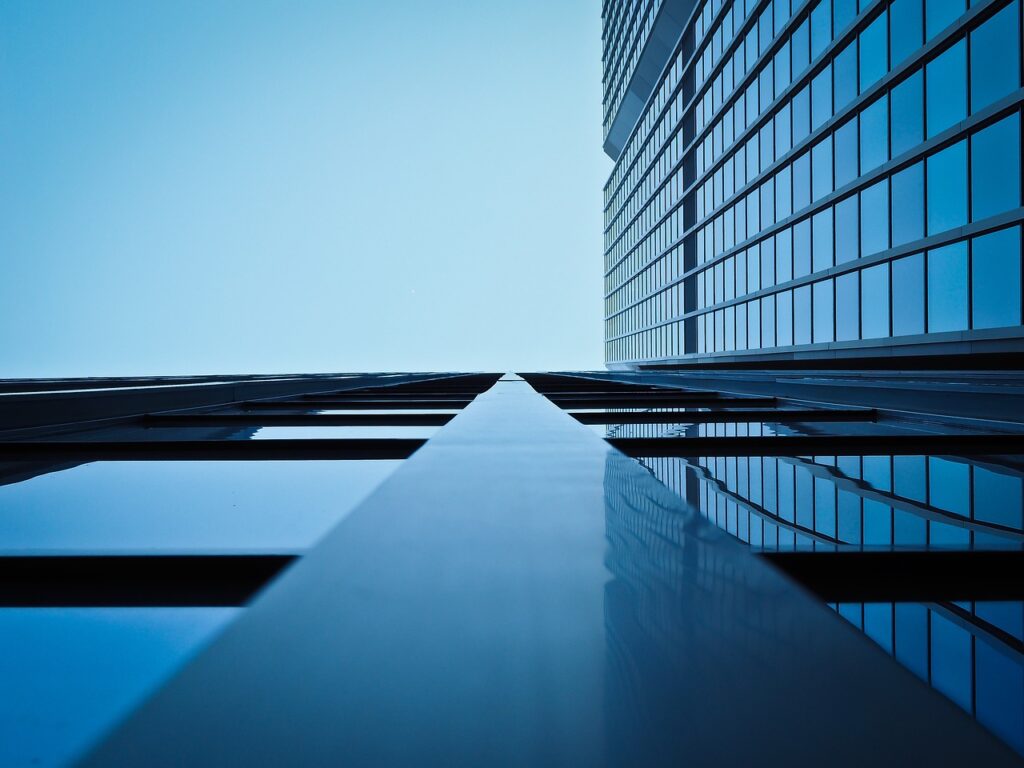Do you know why metal buildings have become increasingly popular for residential, commercial, agricultural, and industrial applications? It is because not only are they affordable, but these structures also last a long time.
Known for their durability, these structures are a preferred choice for anyone seeking a long-lasting building solution. But how long do metal buildings actually last?
While many manufacturers claim their structures can endure for decades, the real answer depends on several critical factors. This includes the type of metal used, climate, maintenance, and construction quality.
In this article, we will explore the average lifespan of metal buildings, what influences their longevity, and how you can ensure your investment stands the test of time.
Average Lifespan of a Metal Building
A well-constructed and properly maintained metal building can last anywhere from 40 to 70 years or more. In fact, under ideal conditions, some structures have been known to last over 100 years. Unlike traditional wood-frame buildings, metal buildings resist many common forms of damage such as rot, termite infestations, and warping.
However, this impressive longevity is not automatic. The lifespan of a metal building is directly influenced by a combination of materials used, environmental exposure, maintenance routines, and the original construction process. Understanding these variables is crucial to getting the most out of your metal structure.
Type and Quality of Metal
The primary material in any metal building is, of course, metal—but not all metals are created equal. The most common materials used in these structures are galvanized steel and aluminum.
Galvanized steel is favored for its strength and corrosion resistance. It’s often treated with a protective zinc coating that helps prevent rusting. High-quality galvanized steel structures can withstand decades of exposure to moisture without degrading. Aluminum, while lighter and naturally corrosion-resistant, is typically used in environments with less structural stress or where weight is a concern.
The gauge of the metal also matters. Thicker metal (lower gauge numbers) means a stronger, more durable building that can handle harsher conditions, heavier loads, and a longer lifespan. Choosing a high-quality, well-coated metal is the first line of defense in extending your building’s life.
Protective Coatings and Finishes
Coatings and finishes significantly enhance the durability of a metal building. Most metal structures are painted or coated with materials that protect against UV radiation, corrosion, and general wear and tear. These finishes aren’t just cosmetic—they’re functional barriers that shield the underlying metal from moisture and environmental stressors.
Paint finishes such as Kynar 500 are highly resistant to fading and chalking, even in harsh sunlight. Galvanization, zinc-aluminum coatings, and powder coatings also add years to a building’s life by preventing rust and oxidation.
Regular inspection of the coatings and timely touch-ups are necessary to maintain the integrity of these protective layers. Once the protective layer is compromised, rust and decay can set in quickly, especially in humid or coastal environments.
Climate and Environmental Conditions
The local climate plays a massive role in determining how long a metal building will last. Buildings located in areas with extreme weather conditions—such as heavy snow, frequent rain, or high humidity—are naturally more vulnerable to wear and tear.
Salt-laden air near coastal areas can accelerate corrosion if the metal is not properly coated. Meanwhile, snow loads can place additional structural stress on roofs, while high winds can loosen fasteners or compromise weak joints.
However, well-designed metal buildings often incorporate features to mitigate climate-related issues. This includes sloped roofs to handle snow accumulation, corrosion-resistant coatings for salty environments, and reinforcements to withstand hurricane-force winds.
Foundation and Site Preparation
The longevity of any building starts from the ground up. A poorly prepared site or subpar foundation can compromise the entire structure, regardless of the quality of the materials used.
Proper drainage, compacted soil, and a level surface are essential. If water is allowed to pool near the base, it can lead to premature corrosion and structural instability. Concrete slabs with moisture barriers are typically the most reliable foundation option for metal buildings, preventing water ingress and providing a solid, even base.
Even minor issues in the foundation can evolve into major structural problems over time. Cracks, shifts, or water seepage can not only affect the usability of the building but can significantly shorten its lifespan.
Construction Quality and Installation
Even the highest-quality materials won’t perform well if the building is improperly assembled. Poor workmanship, misaligned panels, or improperly sealed joints can lead to water leaks, rust formation, and instability.
Hiring experienced contractors or using manufacturer-certified installation crews ensures that your metal building is assembled to specification. This includes correctly installing fasteners, seals, trims, and flashing to prevent moisture intrusion and to maximize structural integrity.
Inspections during and after construction can catch potential issues early, such as missing seals or improper anchoring. A professionally constructed building has a far better chance of achieving its full lifespan potential than a DIY project with overlooked details.
Insulation and Ventilation
Although metal buildings themselves are strong, poor insulation and ventilation can contribute to a host of problems that shorten the building’s life. Moisture buildup inside the building, often caused by condensation, can lead to internal rust, mold, and poor air quality.
Insulating the building properly helps control temperature fluctuations and reduces condensation. Equally important is ensuring adequate ventilation, especially in structures used for storage, living, or working. Ventilation helps expel moisture-laden air and keeps the interior dry and comfortable.
Regular Maintenance and Inspections
Like any structure, metal buildings require regular upkeep to stay in optimal condition. While they may be low maintenance compared to wood or brick buildings, they’re not maintenance-free.
Routine inspections—ideally performed twice a year—can help identify issues such as rust spots, leaks, damaged panels, or loose fasteners. Prompt repairs and touch-ups can prevent minor issues from developing into major structural problems.
Cleaning the building’s exterior can also extend its life. Removing debris, leaves, or snow buildup helps prevent moisture retention and corrosion. Checking gutters and downspouts ensures that water is being effectively diverted away from the building.
Maintenance might seem like a chore, but these small efforts can extend a building’s lifespan by many years.
Pest and Fire Resistance
Metal buildings offer significant advantages when it comes to resisting pests and fire—two threats that can devastate other types of structures.
Unlike wood, metal doesn’t provide a food source for termites, rodents, or insects. This inherently makes metal buildings more resistant to pest-related damage. As a result, there’s less chance of hidden structural compromise from within.
Similarly, steel and aluminum are non-combustible, offering a high level of fire resistance. While no building is entirely fireproof, metal structures can prevent the rapid spread of flames and often withstand fires better than their wooden counterparts. This not only protects the building itself but also its contents.
These resistances add peace of mind and contribute to the building’s long-term durability.
Cost vs. Lifespan: A Long-Term Investment
One of the biggest selling points of metal buildings is their value over time. While the initial cost may be comparable or even slightly higher than other building materials, the long-term savings in maintenance, repair, and replacement often make up for it.
When evaluating the cost per year of usable life, metal buildings often come out ahead. Their resistance to common issues like mold, termites, and rot means fewer expenses over time. Additionally, their durability often results in lower insurance premiums.
The resale value of a property with a high-quality, well-maintained metal building can also be higher, particularly if the structure is still under warranty or in excellent condition.
Real-World Examples of Longevity
Around the world, there are countless examples of metal buildings that have stood for generations. Some early 20th-century steel structures are still in use today, having been maintained and updated to meet modern needs.
From agricultural barns and industrial warehouses to airplane hangars and recreational facilities, the lifespan of metal buildings across sectors speaks volumes. Their continued use highlights the importance of quality materials, good design, and ongoing maintenance.
These real-world cases underscore the potential for metal buildings to last 50, 75, or even 100 years when properly cared for.
Modern Innovations Improving Longevity
Technological advancements in metallurgy, coating materials, and construction techniques continue to improve the lifespan of metal buildings. Modern structures benefit from better corrosion resistance, enhanced energy efficiency, and smarter design.
Self-healing coatings, improved insulation products, and integrated weather monitoring systems are just some of the innovations helping metal buildings last longer than ever before. As building codes become stricter and demand for sustainable construction grows, these innovations will likely become standard.
Choosing a manufacturer or contractor who stays current with these innovations ensures that your building benefits from the latest developments in the industry.
Conclusion
Metal buildings are more than just a practical solution—they are a long-term investment. When constructed with high-quality materials, designed for local environmental conditions, and maintained regularly, a metal building can last for decades—often outliving its initial purpose and adapting to new ones.
Understanding the factors that influence a metal building’s lifespan—such as material quality, climate, coatings, construction, and maintenance—can help you make informed decisions that protect your investment. Whether you’re building a garage, barn, warehouse, or workshop, proper planning and care are essential for maximizing longevity.
If your goal is a structure that’s reliable, cost-effective, and built to last, a metal building is one of the best choices available.

